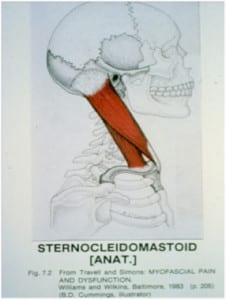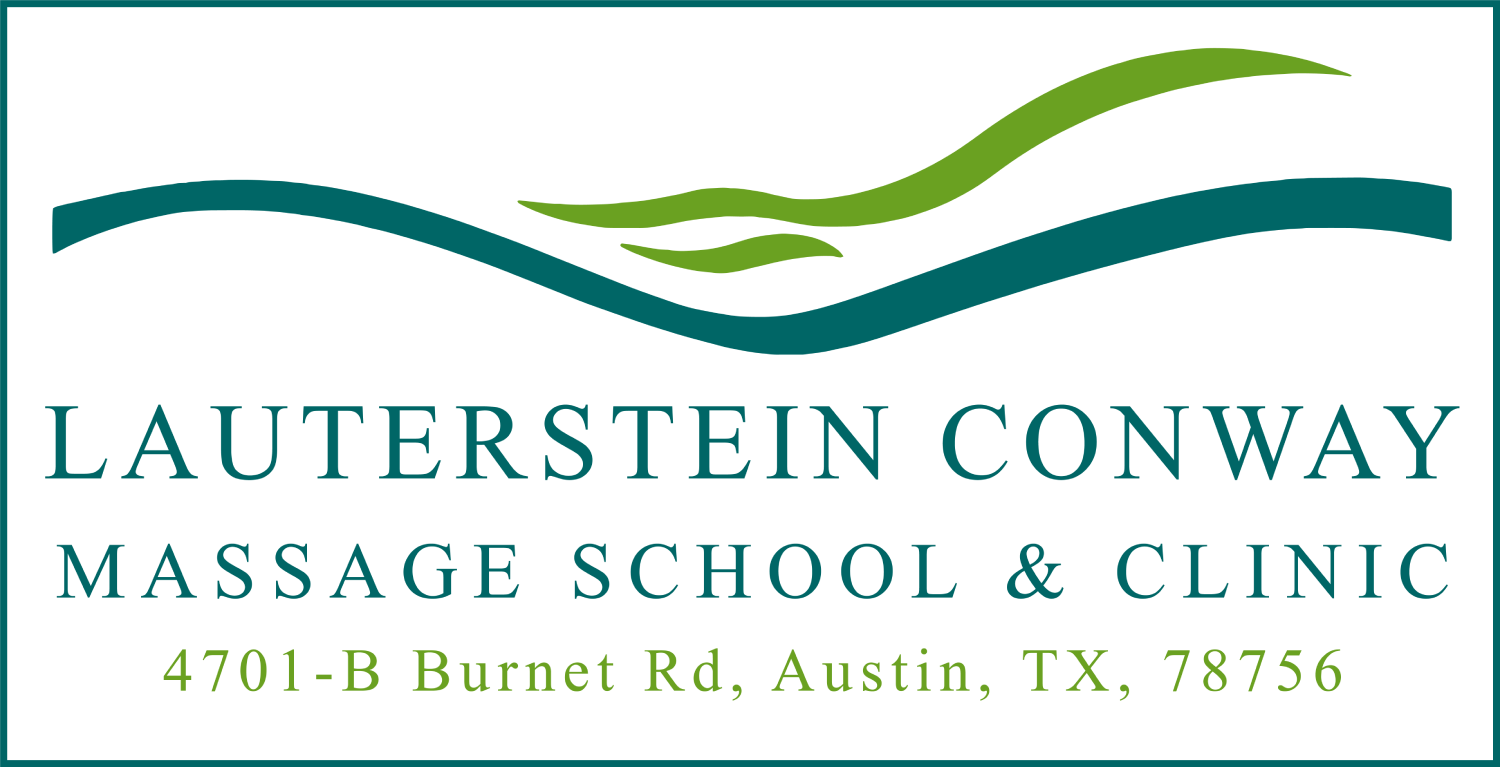by Nancy Dail
Clients regularly complain of having a “stiff neck”. It may hurt to rotate, flex, extend or laterally flex the head or just feel like the head does not respond to movement well. Complaints may also include pain or discomfort on top of the head, general headache, or specific headache pain patterns. Discomfort may run from the back of the head through to the front, and include the entire superior area of the scapula to between the scapulae medially. Multiple complaints may also include upper extremity pain in the shoulder or elbow joints and/or hand and wrist.
The medical history form and interview will help to answer many questions – occupation, repetitive actions, injuries and accidents, sleep patterns, pain patterns, activity and response to other types of care both medical and holistic. What aggravates the condition? What relieves it? Observation will answer postural questions. Is there a head forward posture, protracted shoulders, short upper arms, and a marked handedness? How much pressure is on the posterior cervical muscles based on the head forward posture?
Posture is a repetitive action, and can over time, cause as much discomfort as a sudden injury. The constant head forward posture and position of the shoulders, causes isometric holding patterns for the head extensors, and puts additional stress on the deeper suboccipitals. What other repetitive actions (shoulder girdle and shoulder joint) the individual has, determines what other muscles will play a part in the dysfunction. Muscles work in groups and in paired opposition. This is the aggregate muscle theory – a kinesiology theory that pairs agonist and antagonist action. So, when analyzing and unraveling the stiff neck, the massage therapist must determine active and passive range of motion for the head, neck, shoulder girdle, and shoulder joint. What contributes to the discomfort? Does the individual elevate the shoulder with actions? For example, have you ever tried to shovel snow without lifting the shoulder?
 Armed with action information, determining which muscles are culpable is next. Muscles work as agonists, antagonists, synergists, stabilizers, and neutralizers. Some muscles may be primary, but others assisting in the action may also have to be treated in order for the issue to be resolved. There is also order involved. What muscles do you work on first and in what position? In the case of the stiff neck, the sternocleidomastoid, is a primary muscle. It is often shortened because of posture or my personal favorite when I travel, “hotel pillow syndrome”. Passively shortening this muscle is key to unwinding it quickly. Flex the head and lateral flex the head. Short strip the muscle off the mastoid process while rotating the head toward your thumb. Grasp the length of the SCM with a pincer palpation and work towards the sternum and clavicle. Deep transverse friction the sternum and clavicular attachments.
Armed with action information, determining which muscles are culpable is next. Muscles work as agonists, antagonists, synergists, stabilizers, and neutralizers. Some muscles may be primary, but others assisting in the action may also have to be treated in order for the issue to be resolved. There is also order involved. What muscles do you work on first and in what position? In the case of the stiff neck, the sternocleidomastoid, is a primary muscle. It is often shortened because of posture or my personal favorite when I travel, “hotel pillow syndrome”. Passively shortening this muscle is key to unwinding it quickly. Flex the head and lateral flex the head. Short strip the muscle off the mastoid process while rotating the head toward your thumb. Grasp the length of the SCM with a pincer palpation and work towards the sternum and clavicle. Deep transverse friction the sternum and clavicular attachments.
Working on the SCM before you begin releasing the longissimus dorsi and splenius capitis will allow a more efficient treatment plan. These muscles assist in lateral flexion with SCM being a prime agonist. With SCM’s release, the lateral flexors palpate easier than before SCM’s treatment.
Releasing the SCM may also assist the relaxation of the trapezius. The two muscles share the same nerve – the accessory nerve. Bilaterally, the trapezius is the antagonist for flexion of the head – the prime action of the SCM.
 Of course this is only the beginning of unraveling the stiff neck and solving the puzzle of the involved muscles and actions. There are many more muscles to visit in a specific order to release the stiffness, increase range of motion, and relieve pain from lack of movement, headache, or posture issues. Levator Scapula, splenius cervicis, specific suboccipitals, and even the scalenes play important roles in contributing to the common “stiff neck”.
Of course this is only the beginning of unraveling the stiff neck and solving the puzzle of the involved muscles and actions. There are many more muscles to visit in a specific order to release the stiffness, increase range of motion, and relieve pain from lack of movement, headache, or posture issues. Levator Scapula, splenius cervicis, specific suboccipitals, and even the scalenes play important roles in contributing to the common “stiff neck”.
Sternocleidomastoid diagram by Barbara Cummings illustrator; Myofascial Pain and Dsyfunction, Trigger Point Manual, Travell and Simmons
Technique picture from Kinesiology for Manual Therapies, McGraw-Hill, Dail, Agnew, and Floyd.
Learn more at the Dimensional Massage for Neck and Upper Extremity Pain with Nancy Dail on April 17-19, 2015. CLICK HERE to register today!
